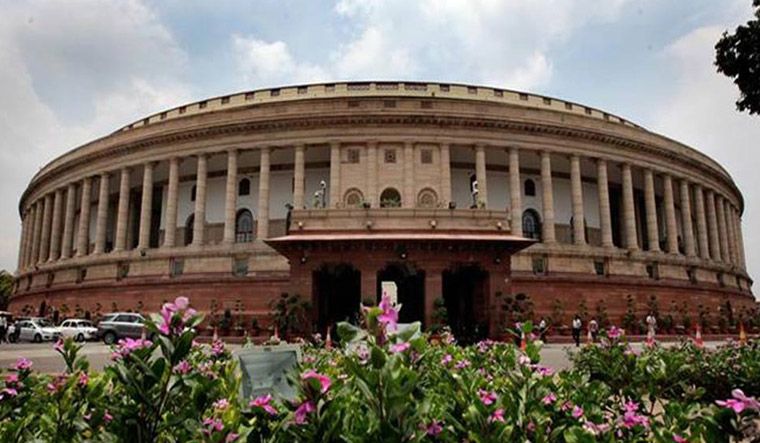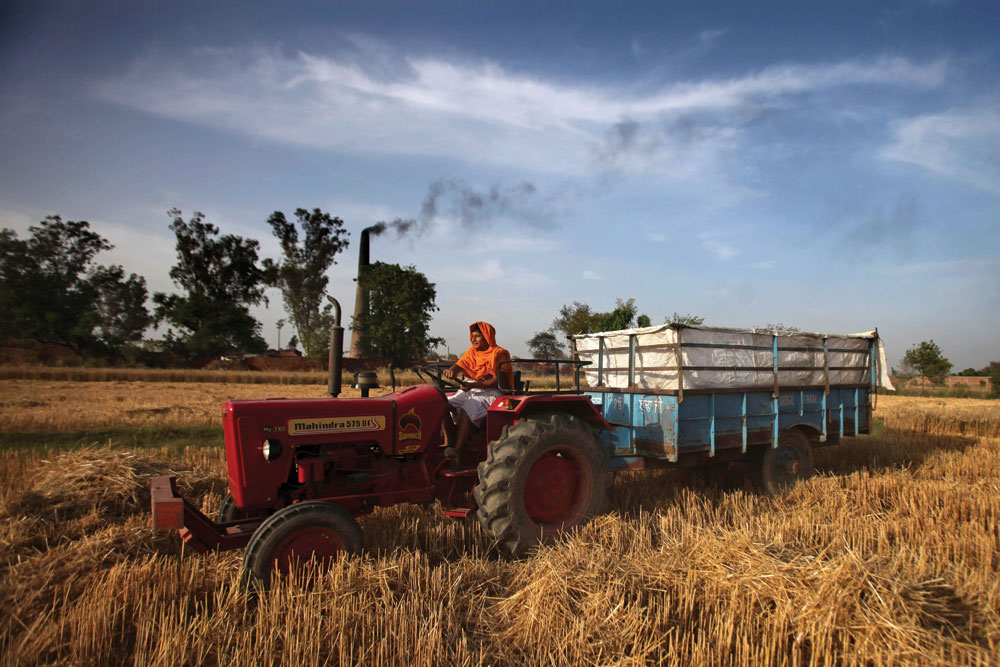The agriculture sector in India employs more than 50 percent of the working population and contributes to 16 percent of the GDP suggesting far too many people are engaged in agriculture than is required to generate the same levels of farm incomes. The ratio is more skewed in poorer states. For example, in Bihar, 80 percent of the population relies on Agriculture and still, its’ contribution to Bihar’s GSDP is just 10 percent.
When India entered into the phase of LPG (Liberalization, Privatization and Globalization) in early 1990s, many sceptics pointed that would destroy India autonomy and make it puppet in the hands of corporates and MNCs but three decades on, the result proved otherwise. Today India stands as the 3rd largest economy in the world and is expected to re-emerge as the fastest growing economy in 2021.
1990s saw a hard time for India when it started defaulting on loan commitments that eventually triggered to a balance of payment crisis. India then chose reforms over uncertainty and turned the crisis to a burst of economic reforms to claw out of it.
With the passage of Farm Bill 2020, which is a combination of 3 bills viz Farmers’ Produce Trade and Commerce (Promotion and Facilitation) Bill, Farmers (Empowerment and Protection) Agreement on Price Assurance and Farm Services Bill and Essential Commodities (Amendment) Bill, India’s agricultural sector has been liberalised by eliminating the middlemen, facilitating better realisations for farmers, attracting private investment and enhancing technology in the sector.

This is perhaps the biggest structural reform in India’s biggest sector (by employment) since independence. India though has achieved food sufficiency with Green Revolution but the benefits of it were largely limited to the Western State of India viz. Punjab, Western UP and it has also resulted in crop imbalance growth and regional disparity.
With the New Farm Acts, the idea is to encourage private and corporate investments in agricultural ecosystem to make it lucrative to farmers and more affordable to the consumers. India is the largest producers of cereal crops such as Wheat, Rice but Indian agriculture so far has been a subsistence practice; it has not benefitted much to farmers, the small and marginalised farmers still struggle to get basics; Health, Education, Food , Cloth and House. The farm bill is much needed reform to make Indian Farmer Atma Nirbhar [Self-Reliant]
As India is embarking on its journey to become a Vishwa Guru, the new India can’t be governed by the rules of the post-colonial era. The 20th century period was a period of scarcity in India and survivability and sustainability were more important than any reforms.
India must shed the rules of the past that does not suit its global ambition even at the cost of ‘unpopular’ reforms. Thanks to the mandate the Modi government has and its sheer will to bring structural changes, the Farm Bills 2020 provide the much-needed change. PM Vision of doubling Farmers income will be the key objective of this reform.
India of today being a top FDI destination, much can be attributed to its unprecedented economic growth over the years to reforms in industry, currency markets and manufacturing. But the FDI the growth is stuck due to sectoral imbalances.

APMC is an obsolete institution of a bygone era, meant to protect the interest of the farmers but ended up becoming the major obstacle in their path to prosperity. It has become the center of intermediaries who manipulate the crop price and remain as an exploitative element. It neither benefits farmers nor consumers. It is interesting to note that, sectors such as milk, fishery, and poultry have grown on average 4-10% annually as compared to a dismal growth rate of 1.1% in cereals where government intervention is high. [It is to be noted the government intervention in these sectors is minimal.]
The Farmers’ Produce Trade and Commerce (Promotion and Facilitation) Act, 2020:
This Act allows the farmers to sell their produce outside the Agricultural Produce Market Committee (APMC) regulated markets. The APMCs are state-controlled marketing yards (mandis). With the enactment of this Act, the farmers will have more choice on who they want to sell. APMC worked more like a monopoly cartel that forced farmers to make distress sales. The APMCs will not cease to exist but will now have to compete with private platforms since farmers will have the option to choose the best remunerative option. The reform is much like allowing private competition in banking, insurance, or telecom.
What was meant as reforms to free Indian agriculture of our state procurement system’s stranglehold, it appears, were interpreted as an invitation to a corporate takeover of farming by protesters, who have demanded that they be repealed. With the new bill, the farmers and traders will experience the freedom of option to sell and purchase agri-produce. It would enable barrier-free inter-state and intra-state trade and business outside the physical boundaries of markets The farmers will not have to pay any cess or levy for sale of their products and will not have to pay for transportation costs An electronic trading platform has been proposed for ensuring a seamless trade electronically.
In addition to mandis, farmers would enjoy the freedom to do trading at farmgate, cold storage, warehouse, processing units, etc. Farmers will be able to do direct marketing thus eliminating intermediaries resulting in the realization of higher prices.
The Farmers (Empowerment and Protection) Agreement on Price Assurance and Farm Services Act, 2020:
This Act makes provisions for the setting up of a framework for contract farming. The farmer and an ordained buyer can strike a deal before the production happens.
Standing Committee on Agriculture (2018-19) observed the APMC laws needed reforms as cartelization had begun to crystallize due to a limited no. of traders in APMC mandis.
Essential Commodities (Amendment) Act
The Economic Survey has pointed out that the Essential Commodities Act (ECA) is anachronistic and irrelevant in today’s India as the Act was passed in 1955 in an India worried about famines and shortages. The Survey observes the frequent and unpredictable imposition of blanket stock limits on commodities under the ECA distorts the incentives for the creation of storage infrastructure by the private sector, movement up the agricultural value chain, and development of a national market for agricultural commodities.
An amendment to the Essential Commodities Act, 1955, seeks to restrict the powers of the government with respect to production, supply, and distribution of certain key commodities. The act removes cereals, pulses, oilseeds, edible oils, onion, and potatoes from the list of essential commodities.
As of now, APMC networks are not just inefficient, with some agents taking almost a third of the bills borne by taxpayers as their cut, they are also prone to corruption. Rivalry among buyers for the best crop could raise quality levels, bid up farmgate prices, and get investment ploughed in. If a cartel of buyers were to arise, sellers could appeal to India’s competition watchdog.
Although the Acts don’t talk about abolishing MSPs, the need of the MSPs are over. More than helping farmers, they distort the market, by incentivising farmers grow what they are paid for, rather than what’s in demand. This has made farmers over-cultivate water-intensive crops like paddy, depleting our water table and depriving protein-rich crops of acreage, even as price trends signal a dietary shift towards the latter. An expenditure on the MSP is a revenue expenditure not capital, a statutory backing to turn MSPs into a legal guarantee would not be fiscally feasible too.

Conclusion
The purchase by organized retailers shortens the length of the supply chain, providing more chunks of profits to farmers and also reducing the prices for the end consumers by eliminating the middlemen in the supply chain.
The contract farming would ensure the farmers will have the latest farm technology at their disposal, this not only would help farmers but also increase the yield. The bills are reformists, pro farmers, provide the opportunity to sell their produce on prices determined by them. India’s agricultural sector needs reforms to reduce the excess production of certain crops and make produce in line with the demand and market needs. The age-old system lowers the sector’s global competitiveness and kill the chances in an export-oriented world.
While the vocal minority is the one that usually benefits from the status quo continuing, the silent majority is the major beneficiary of these reforms.
The government must not bend to the pressure of the protesters and keep on pursuing its reformist agenda.

Very good and relevant article on Farms Reforms Act. Hope this article will clarify doubts.